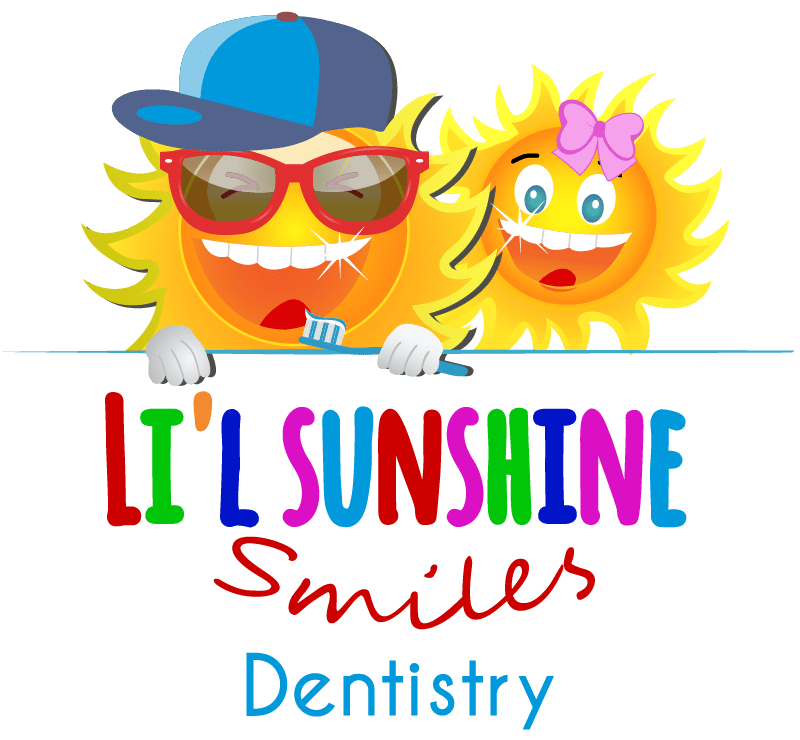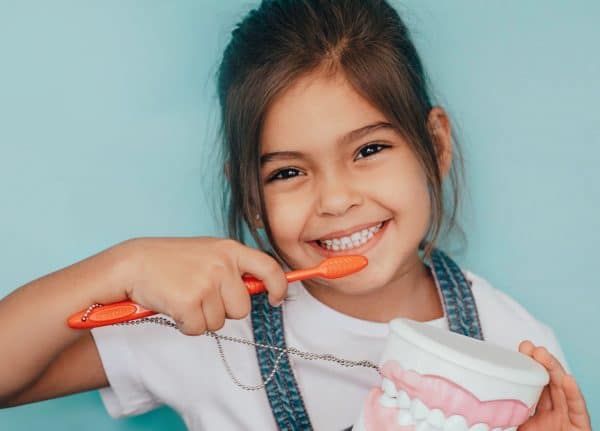Early Childhood Tooth Decay Affects 42% of the Young
Early childhood tooth decay refers to when a preschool-age child (birth and 6 years) has one or more decayed, missing, or filled tooth surfaces in any primary tooth. According to the National Institute of Dental and Craniofacial Research, 42% of children 2 to 11 have had dental cavities in their primary (baby) teeth.
Early childhood tooth decay triggers oral pain and infections that cause eating problems, difficulty speaking, disruption to regular playing and learning. Learn what you can do to prevent this from happening.
Prevent Cavities with the Following In-Office Helps
While much of what you do at home with your child’s oral hygiene and diet will influence their oral health, there are a few things we do at Li’l Sunshine Smiles that can make a big difference.
Fluoride varnishes have been shown to reduce the occurrence of cavities by 33 percent in primary teeth. If you live in an area that has fluoridated tap water, your household is more protected against tooth decay. Find out if you are or aren’t. The best way to discover the fluoride level of your local public water system is to call your water utility provider. Look for the name and contact information of the water utility on your water bill.
Our office also offers our patients dental sealants to seal out tooth decay. Research shows that when dental sealants are applied to chewing surfaces of the back teeth, cavities are reduced by 80 percent.
Home Steps to Prevent Early Childhood Tooth Decay
Little mouths need help to stay healthy so parents must have an active role. Here are some things you should do at home to help reduce early childhood tooth decay.
Oral Care for Babies
Which category do your children currently fall into? Oral hygiene for babies is different than what you will do for an older child. Even before babies get teeth you should wipe their gums twice a day with a soft, clean cloth after their first feeding and before bedtime to help remove the bacteria and sugars that adhere to their gums and cause cavities.
After teeth come in, you can start to brush twice a day with an ADA-approved toothbrush for that age range. This toothbrush is soft and has small-bristles. No toothpaste necessary yet; just use water. Make an appointment for your child’s first dental visit by your baby’s first birthday so Dr. Cat can look for any signs of early childhood tooth decay that she can get on top of before problems start.
Talk to Dr. Cat about when it is appropriate to begin using fluoride-enriched toothpaste on little smiles. (Typically after the age of 2).
Oral Care for Toddlers – Age 6
Once your children have had their first dental visit, and have left the baby stage, it’s time to think about some of the other measures we have talked about above. Still brush teeth twice a day, but use toothpaste fortified with fluoride. This is something parents should be involved in with their children at least until age 6. Young children need help cleaning all their teeth. Show that only a pea-sized amount of toothpaste is needed. Teach them to spit out toothpaste, not to swallow it.
Ask Dr. Cat to apply dental sealants where needed to seal out decay.
The American Academy of Pediatrics provides charts and brochures on protecting tiny teeth that you can download, print and hang-up in your bathroom or home to assist you and your family with preventing early childhood tooth decay.
Call Li’l Sunshine Smiles at 813-576-0200 to schedule a consultation to learn more about early childhood tooth decay and to get your little one seen!


